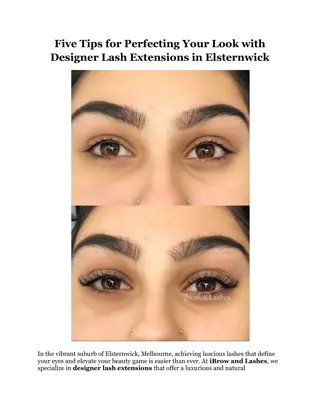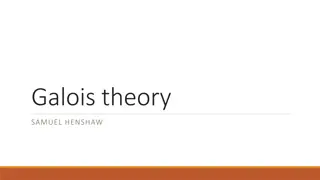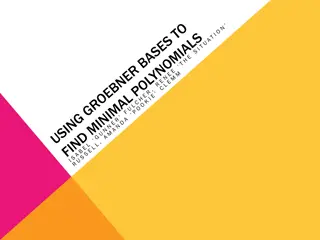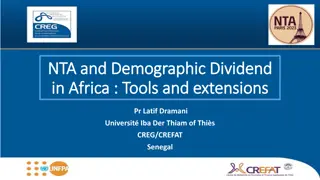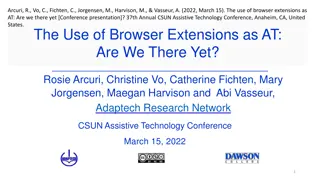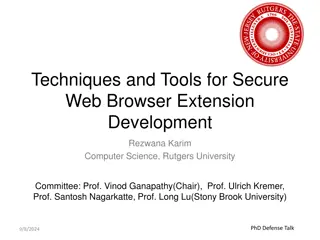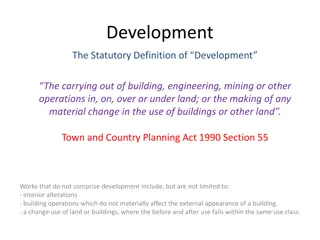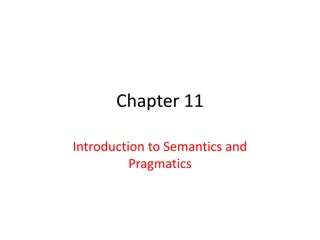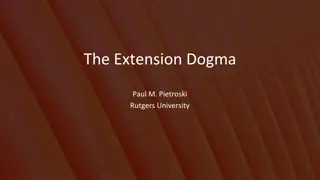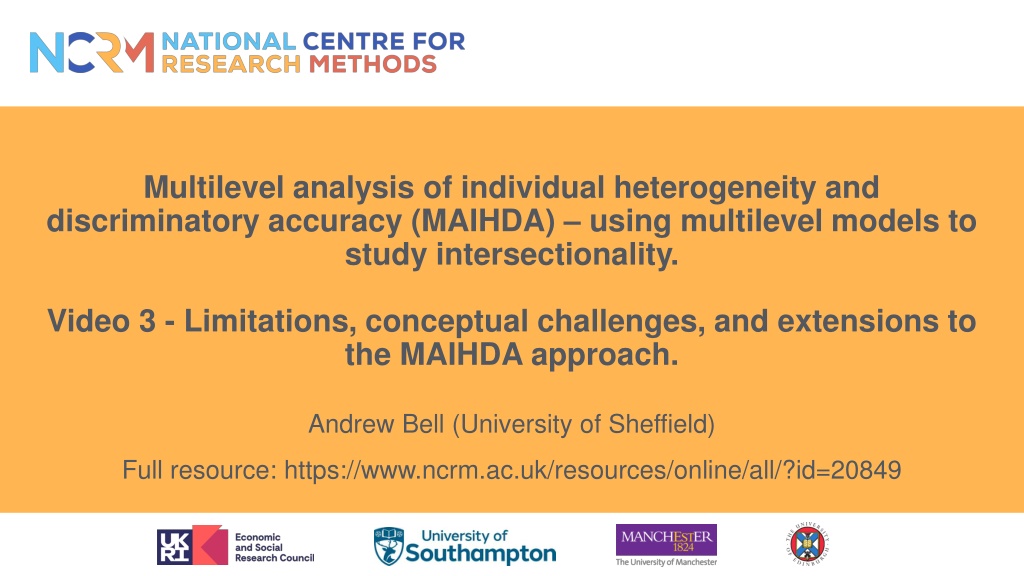
Exploring Limitations and Extensions in MAIHDA Approach
Dive into the limitations, sample size considerations, and conceptual challenges of Multilevel Analysis of Individual Heterogeneity and Discriminatory Accuracy (MAIHDA) approach in intersectionality studies. Discover how to enhance multilevel models with further control variables and interactions for a deeper analysis.
Download Presentation

Please find below an Image/Link to download the presentation.
The content on the website is provided AS IS for your information and personal use only. It may not be sold, licensed, or shared on other websites without obtaining consent from the author. If you encounter any issues during the download, it is possible that the publisher has removed the file from their server.
You are allowed to download the files provided on this website for personal or commercial use, subject to the condition that they are used lawfully. All files are the property of their respective owners.
The content on the website is provided AS IS for your information and personal use only. It may not be sold, licensed, or shared on other websites without obtaining consent from the author.
E N D
Presentation Transcript
Multilevel analysis of individual heterogeneity and discriminatory accuracy (MAIHDA) using multilevel models to study intersectionality. Video 3 - Limitations, conceptual challenges, and extensions to the MAIHDA approach. Andrew Bell (University of Sheffield) Full resource: https://www.ncrm.ac.uk/resources/online/all/?id=20849
Some important limitations This approach is explicitly exploratory In that, we aren t usually testing whether a particular intersectional strata is different from others Rather an approach that looks at patterns and draws conclusions from that But exploration can be robust!
Some important limitations Sample size considerations We are dividing up the population into subgroups Including into subgroups we know are likely to be relatively small Even with a large population there may be subgroups with zero people! And others with just a handful of people That requires some thought How many variables should I include to define strata How many groups should I divide each variable into If we can t divide our variables enough, is it better to do something more standard / non-intersectional? That will depend on the research question being asked (eg are you interested in particular intersectional groups?) the nature of the variables defining intersection THEORY THEORY THEORY (i.e. what does theory say will be important / less important how big a dataset do you have Eg: Ethnicity as White vs Non-White
Key conceptual challenges What do we mean by intersectionality? Is it being driven by societal power structures of oppression? Does it have to be multiplicative to be intersectional? With so many results, how do we focus on results / tell a story without bias? MAIHDA is not fundamentally an intersectional method We may find differences between subgroups that are not driven by social injustice We could use the method to understand multicategorical differences in non-identity-related variables
Where to go next with these models Multilevel models are highly flexible, and MAIHDA models are no exception We can extend our model however we see fit within the multilevel modelling framework Add further control variables to change what the strata inequalities are referring to Eg control for past school performance change target of inference from attainment to progress Add particular two-way interactions see if they explain the multiplicative differences identified. Add random slopes see how the effect of a variable is intersectionally patterned Add levels geographical, longitudinal analysis









